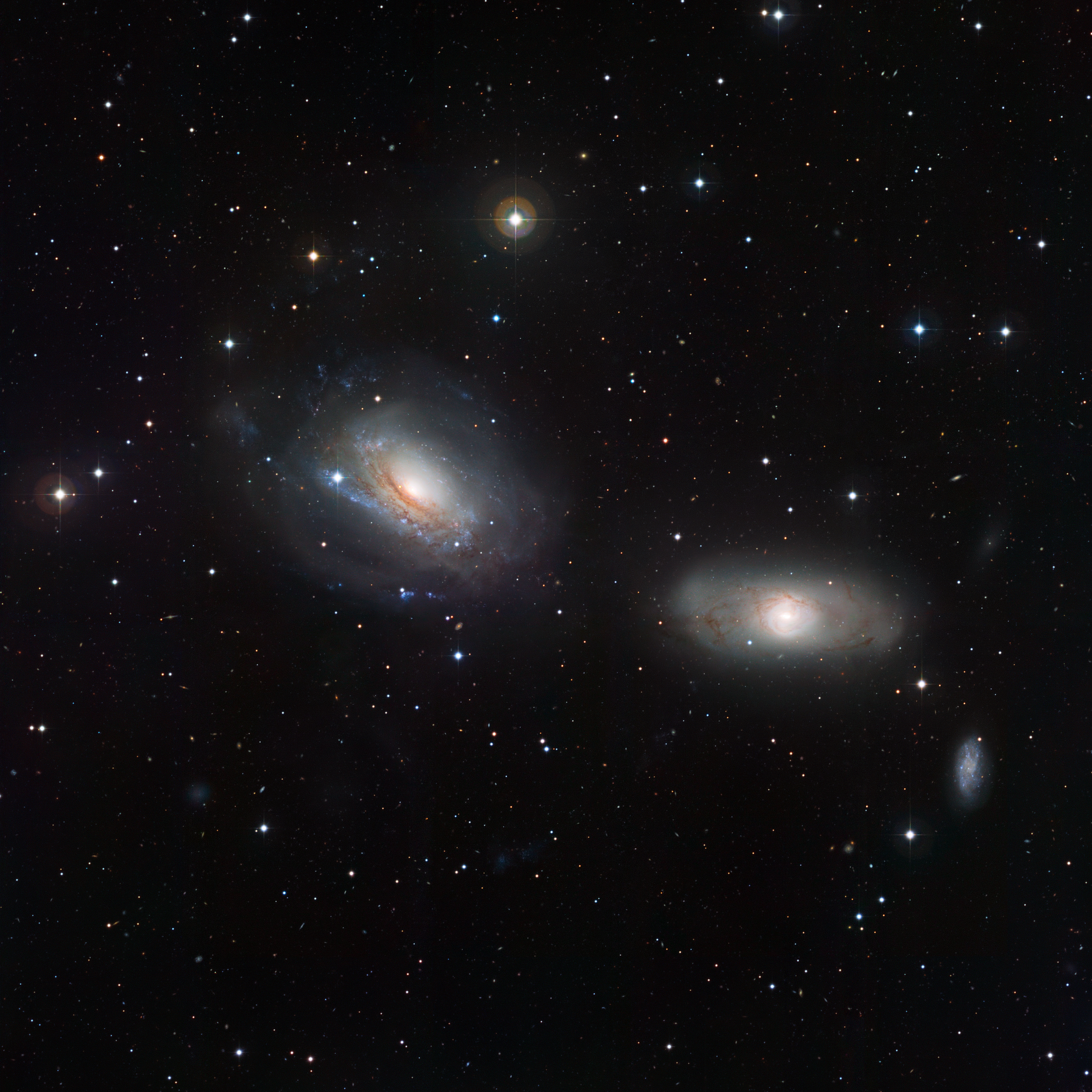Gravitational Tug-of-War Distorts Spiral Galaxy Pair

A pair of spiral galaxies displays some curious features in a new image from the European Southern Observatory, showing that the members of the galactic duo are close enough to exert their distorting gravitational influence on each other.
The gravitational tug-of-war has warped the spiral shape of one galaxy, NGC 3169, and fragmented the dust lanes of its companion NGC 3166. Meanwhile, a third, smaller galaxy to the lower right, NGC 3165, has a front-row seat to the gravitational twisting and pulling of its bigger galactic neighbors.
The image was captured by the Wide Field Imager on the MPG/ESO 2.2-meter telescope at the La Silla Observatory in Chile.
NGC 3169 (left) and NGC 3166 (right) were discovered by the English astronomer William Herschel in 1783. The galactic pair is located about 70 million light-years away in the constellation Sextans (The Sextant).
Modern astronomers have estimated the distance between the two galaxies as a mere 50,000 light-years -- a separation that is only about half the diameter of our own Milky Way galaxy. In such tight quarters, the powerful forces of gravity can start to wreak havoc on galactic structures.
Typically, spiral galaxies such as NGC 3169 and 3166 tend to have orderly swirls of stars and dust in pinwheel-like wisps around their glowing centers. Close encounters with other massive objects can jumble this classic configuration, often serving as the impetus for the merging of galaxies into one larger galaxy.
The gravitational interactions between NGC 3169 and NGC 3166 have only slightly altered their appearance. NGC 3169's arms, which are speckled with big, young, blue stars, have been teased apart, and a glowing veil of gas has been drawn out from its disk.
Get the world’s most fascinating discoveries delivered straight to your inbox.
In NGC 3166, the dust lanes that usually outline the galaxy's spiral arms appear to be in disarray. Unlike its bluer counterpart, NGC 3166 is not forming many new stars. [Top 10 Star Mysteries]
There is, however, one additional thing that sets NGC 3169 apart: a faint yellow dot beaming through a veil of dark dust just to the left of and close to the galaxy's center. This flash is the remnant of a supernova that was detected in 2003 and is catalogued as SN 2003cg.
This type of supernova is known as a Type Ia supernova, and is thought to occur when a dense, hot star called a white dwarf -- a remnant of medium-sized stars like our sun -- uses its gravitational influence to suck gas away from a nearby companion star. This added fuel eventually causes the whole star to explode in a runaway fusion reaction.
Follow SPACE.com for the latest in space science and exploration news on Twitter @Spacedotcom and on Facebook.
This story was provided by SPACE.com, a sister site to LiveScience.




